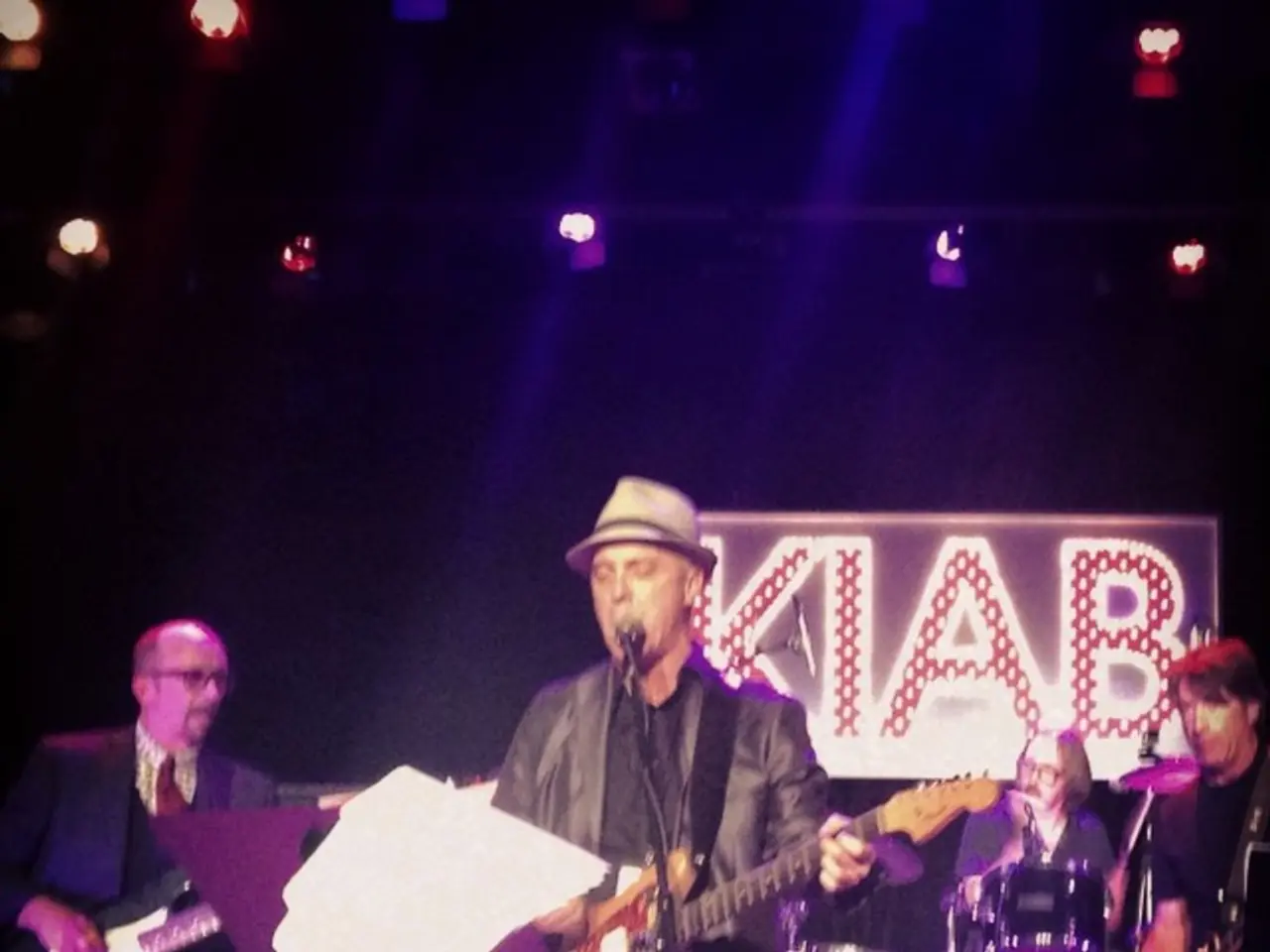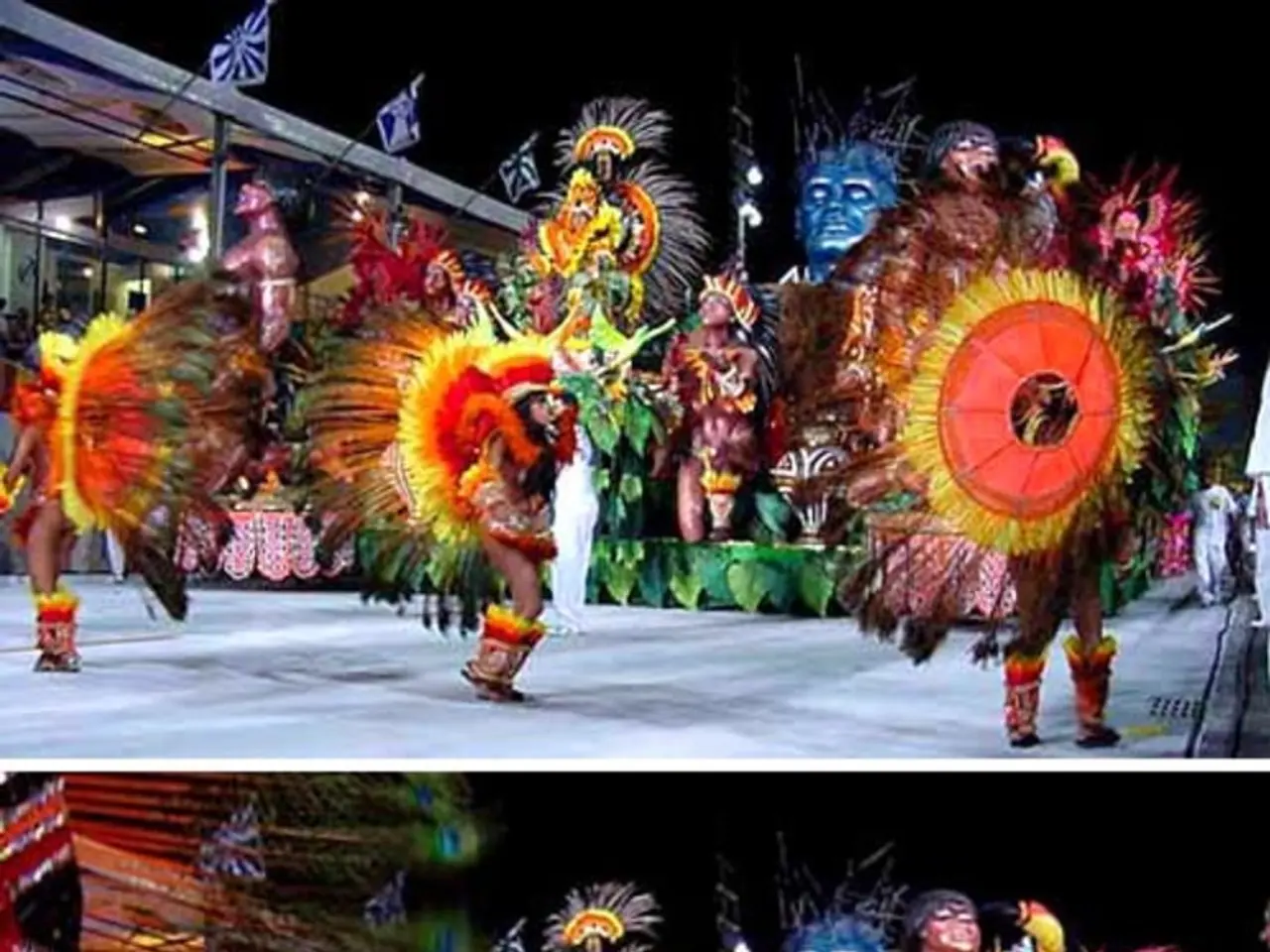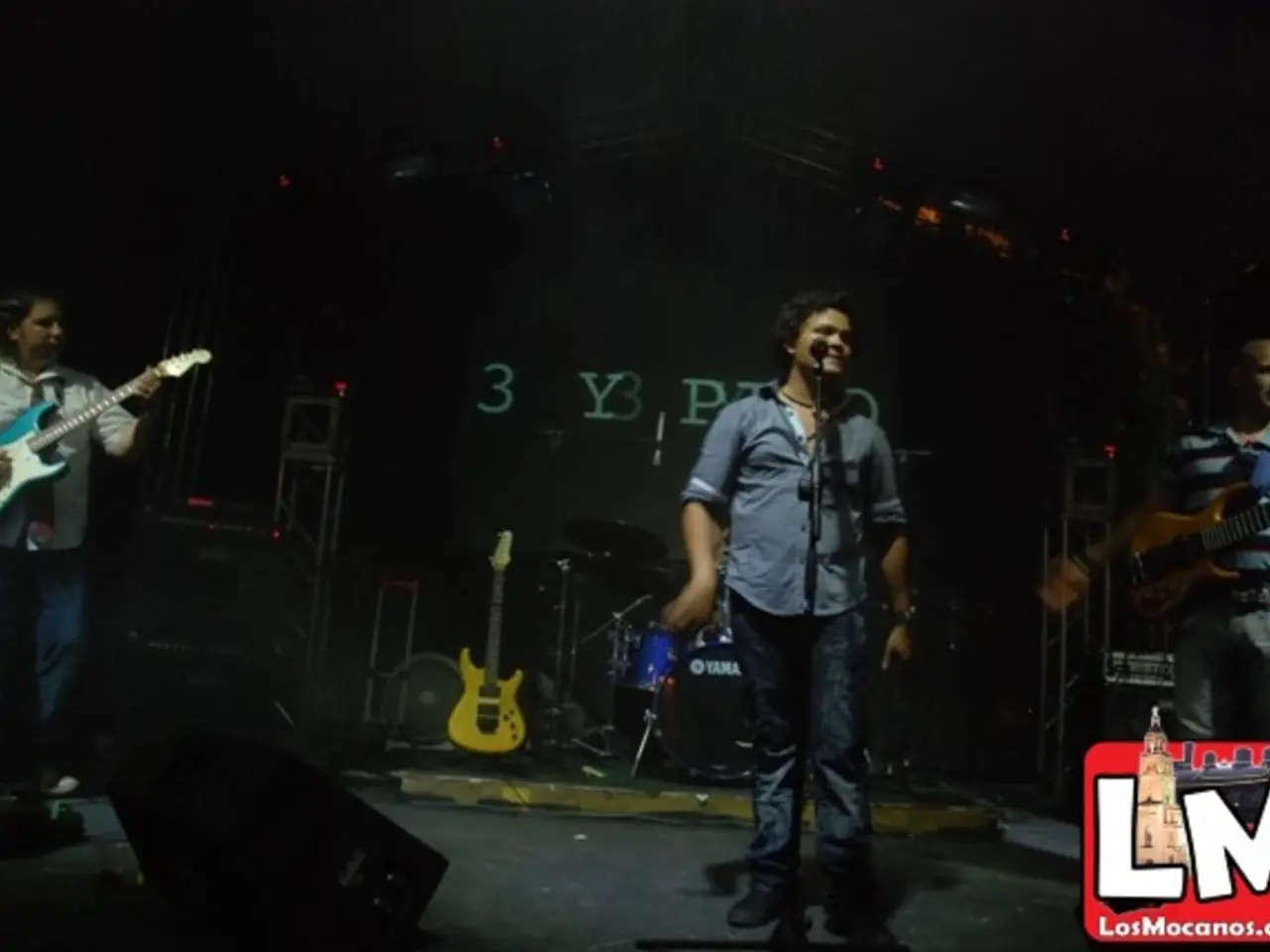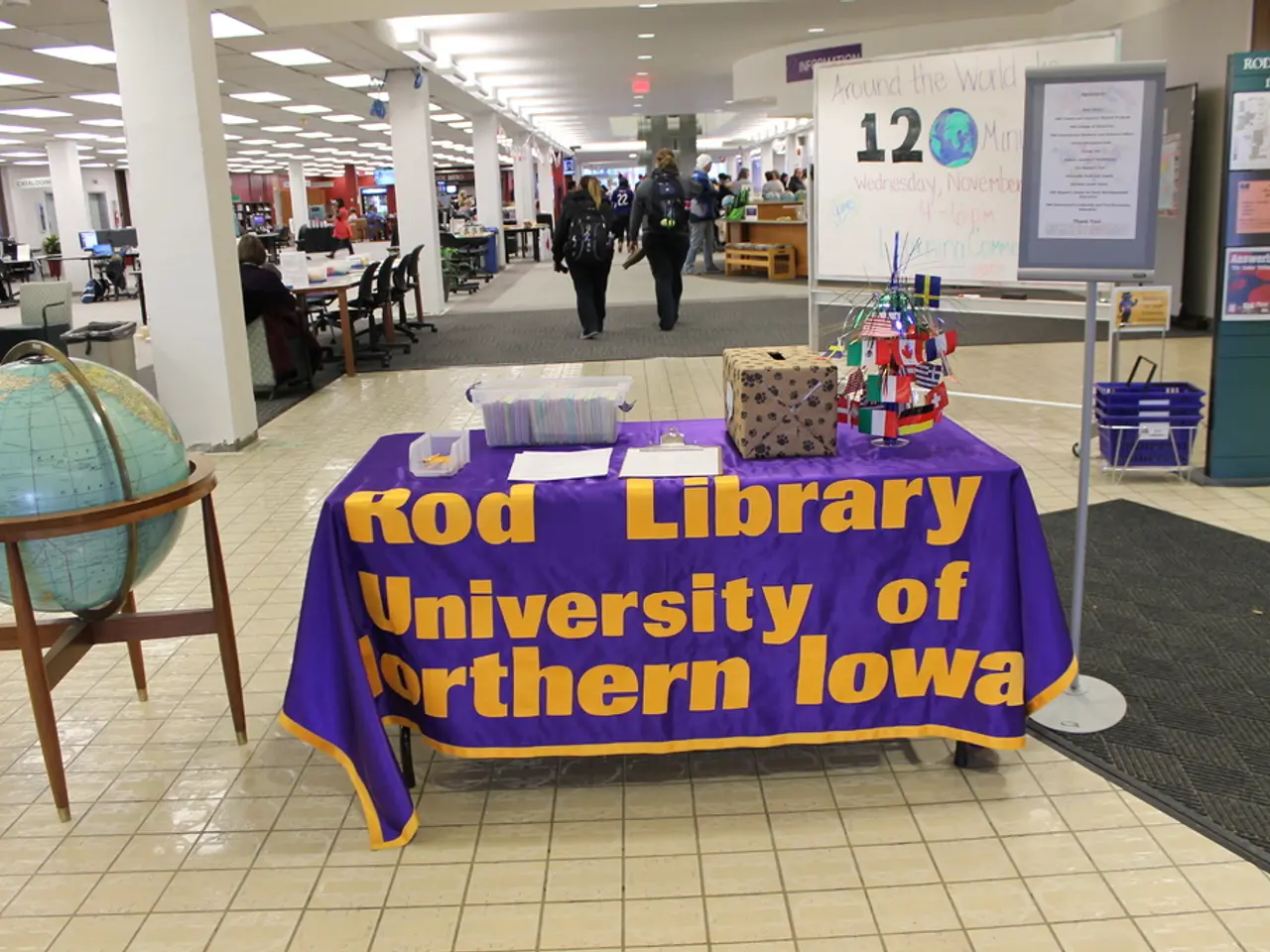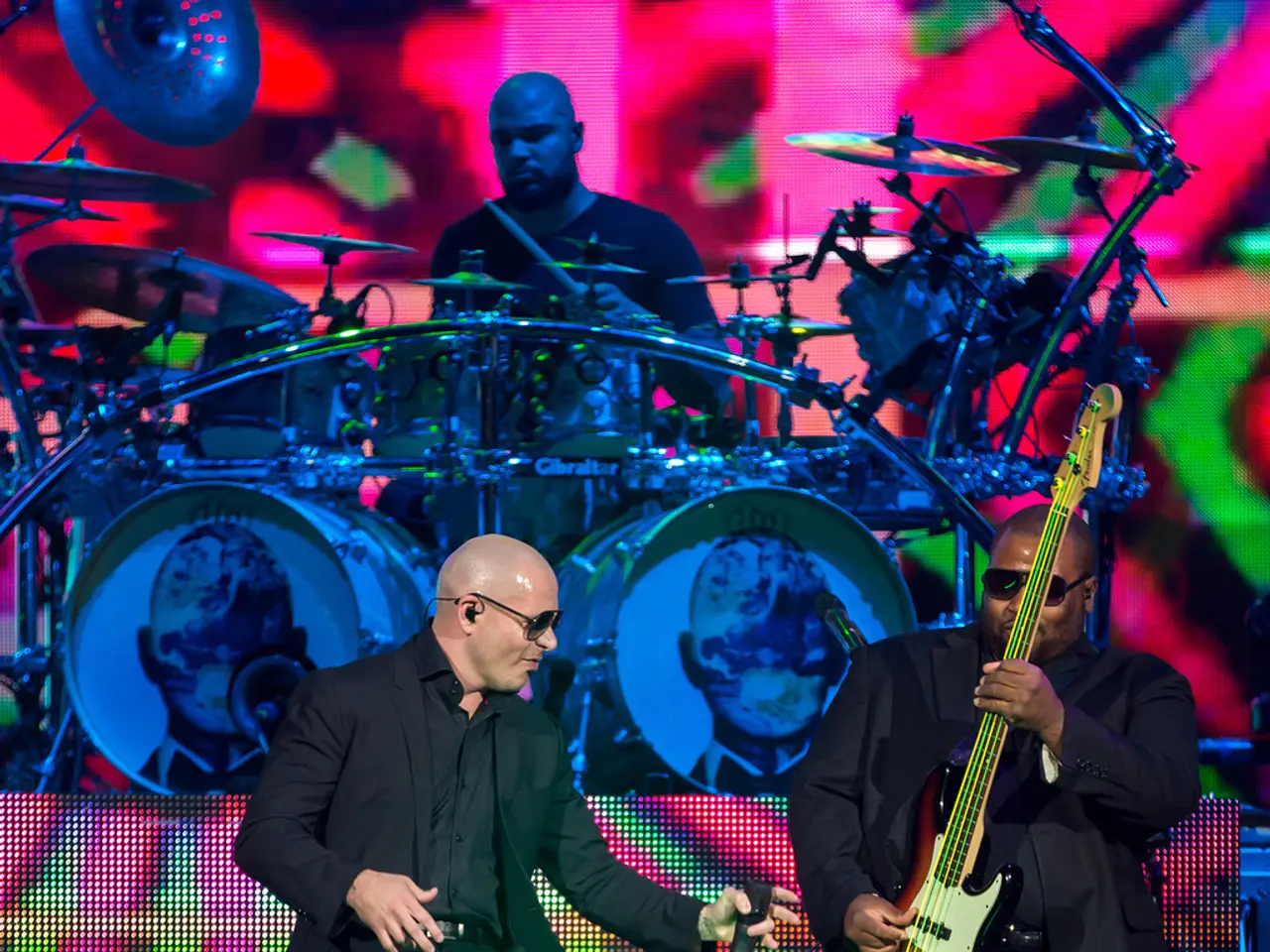Previewing the Future Sounds: Identifying Emerging Patterns and Promising Artists in the Realm of Mainstream Pop!
In the modern music landscape, social media platforms like TikTok have revolutionised the industry, offering a new avenue for artists to connect with their audience and promote their music easily. This digital revolution has propelled the rise of singers-songwriters such as Luna Nova, whose haunting vocals and introspective lyrics blend indie folk with electronic elements.
The enigmatic algorithm behind TikTok propels songs to viral status in a whirlwind, exposing them to millions within a blink of an eye. This rapid exposure has led to a fusion of genres in contemporary pop music, with artists experimenting with a mix of pop, hip-hop, electronic, and rock.
This genre fluidity is reflected in the current trends in pop music, where artists freely blend styles such as K-pop, reggaeton, trap, indie, Afrobeats, and country within single songs. This melting pot of musical influences signifies a broader cultural openness and technological shifts enabling such crossover creativity.
Nostalgic influences are also resurging, notably through what is called "recession pop," a sound marked by bright, upbeat, and nostalgic anthems that echo early 2000s pop, providing uplifting solace during uncertain times. This trend blends retro elements like synths and vocal chops with modern production and catchy hooks designed for social media virality.
Hyperpop, a microgenre originating in the early 2010s UK scene, remains a significant trend influencing mainstream pop. Known for its maximalist, futuristic take blending pop, electronic, rock, hip hop, and dance elements, hyperpop gained more exposure through viral internet culture and Spotify playlists, in particular elevating artists like 100 gecs and Charli XCX.
Alt-R&B also continues to be a prominent emerging genre, blending traditional rhythm and blues with alternative production and indie influences, thus offering a fresh, genre-bending sound that fits well within the contemporary pop landscape.
As the music industry evolves, so does the role of technology. AI and machine learning are playing a significant role in music creation, while streaming platforms like YouTube and Vevo have given music videos a new significance in connecting artists with fans on a deeper level.
The power of music videos lies in their ability to evoke curiosity, spark intrigue, and leave audiences spellbound. The future may see a fusion of physical gatherings and virtual experiences in live music events, providing audiences with immersive options for engaging with live music scenes.
Moreover, artists are using their platforms to shed light on climate change issues, urging fans to take steps towards a greener future. Music festivals are implementing measures to decrease waste and promote recycling, while green recording studios are being utilised to lessen environmental impact.
The DIY music culture empowers artists to have complete creative control over their work, bypassing traditional record labels and allowing independent artists to reach a global audience without relying on major label support. This democratisation of the music industry has led to increased experimentation and innovation within the industry, with collaborations between artists from different genres shaping the future of music.
The music industry is setting an example for fans and other industries alike, championing equality and representation through their artistry. Post Malone, for instance, blends rock and pop with hip-hop, captivating listeners across genres and pushing boundaries in the industry. Artists are also challenging traditional gender norms in pop music, contributing to a culture of ingenuity and inclusivity.
In conclusion, the pop music scene in 2025 is a vibrant blend of innovation and nostalgia, characterised by genre fluidity, technological impacts, and a resurgence of nostalgic influences from past eras. The industry continues to evolve, with artists embracing fluidity and authenticity in their expression, technology revolutionising music creation, and the music industry leading the way in sustainability and inclusivity.
- The digital revolution on platforms like TikTok has blurred the lines between genres in contemporary pop music, encouraging artists to experiment with a mix of pop, hip-hop, electronic, and rock.
- Hyperpop, a microgenre that combines pop, electronic, rock, hip hop, and dance elements, remains a significant trend, gaining more exposure through viral internet culture and Spotify playlists.
- Alt-R&B, a genre that blends traditional rhythm and blues with alternative production and indie influences, continues to be a prominent emerging genre in the pop music landscape.
- The DIY music culture empowers artists to have complete creative control over their work, enabling independent artists to reach a global audience without relying on major label support.
